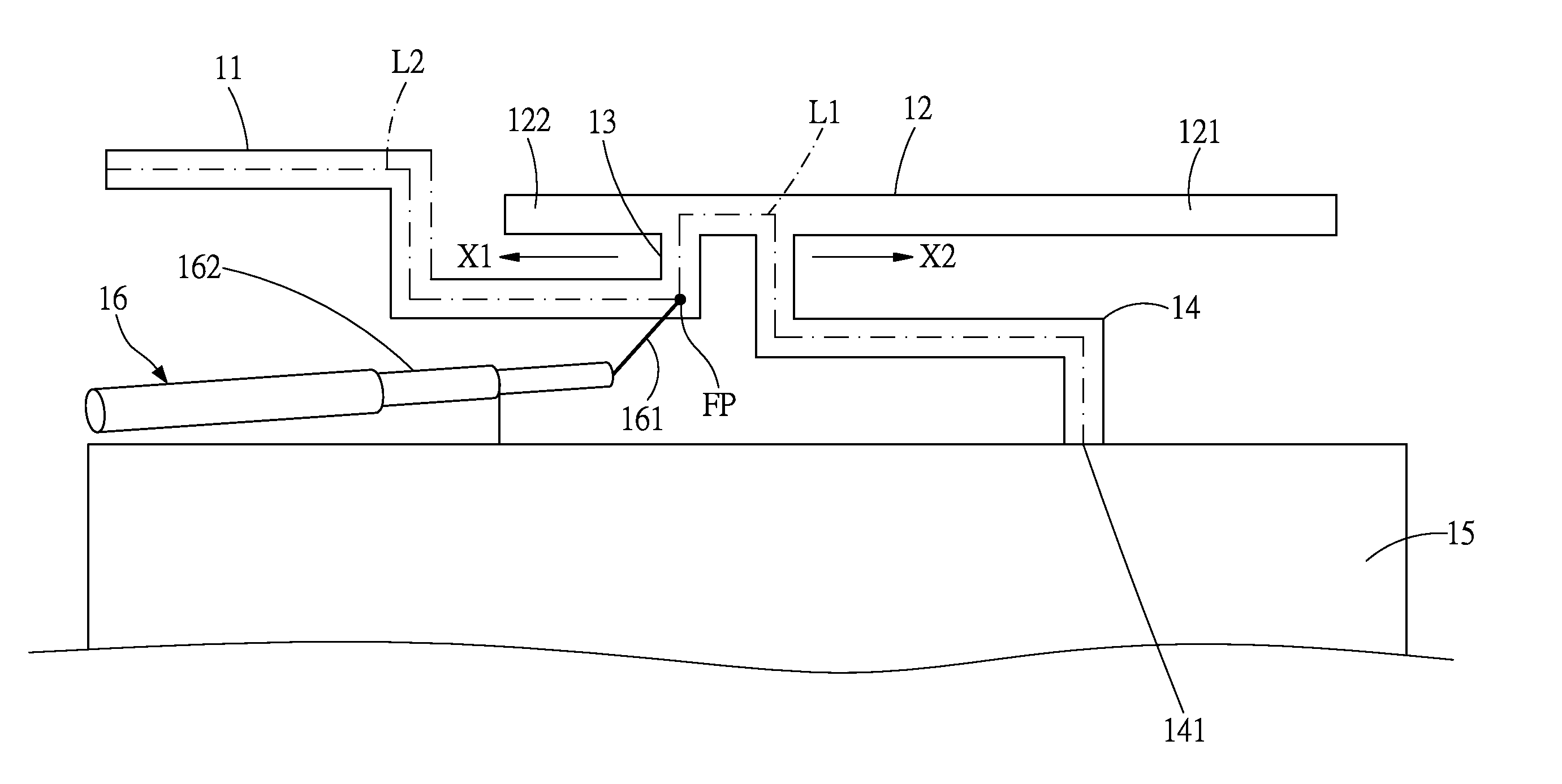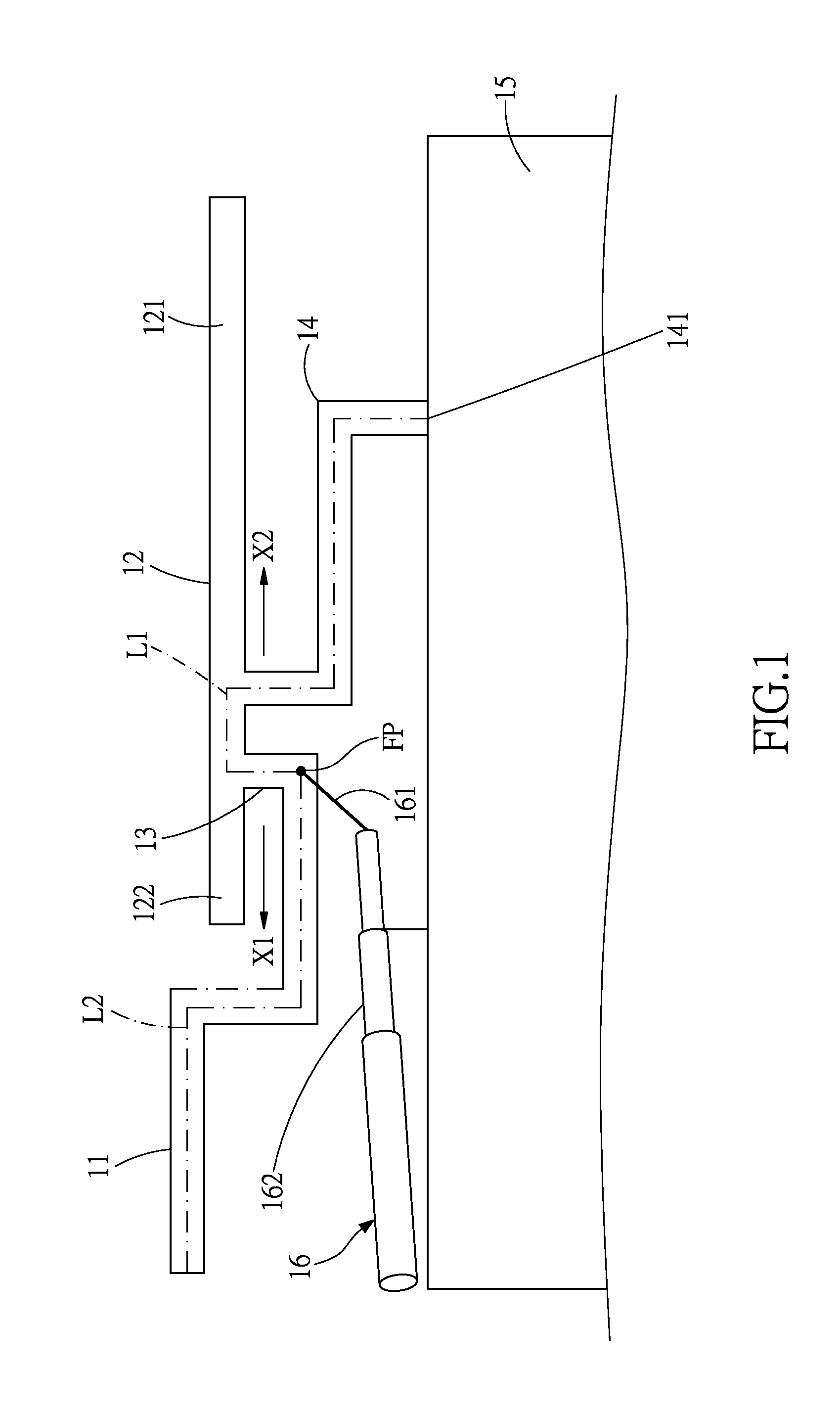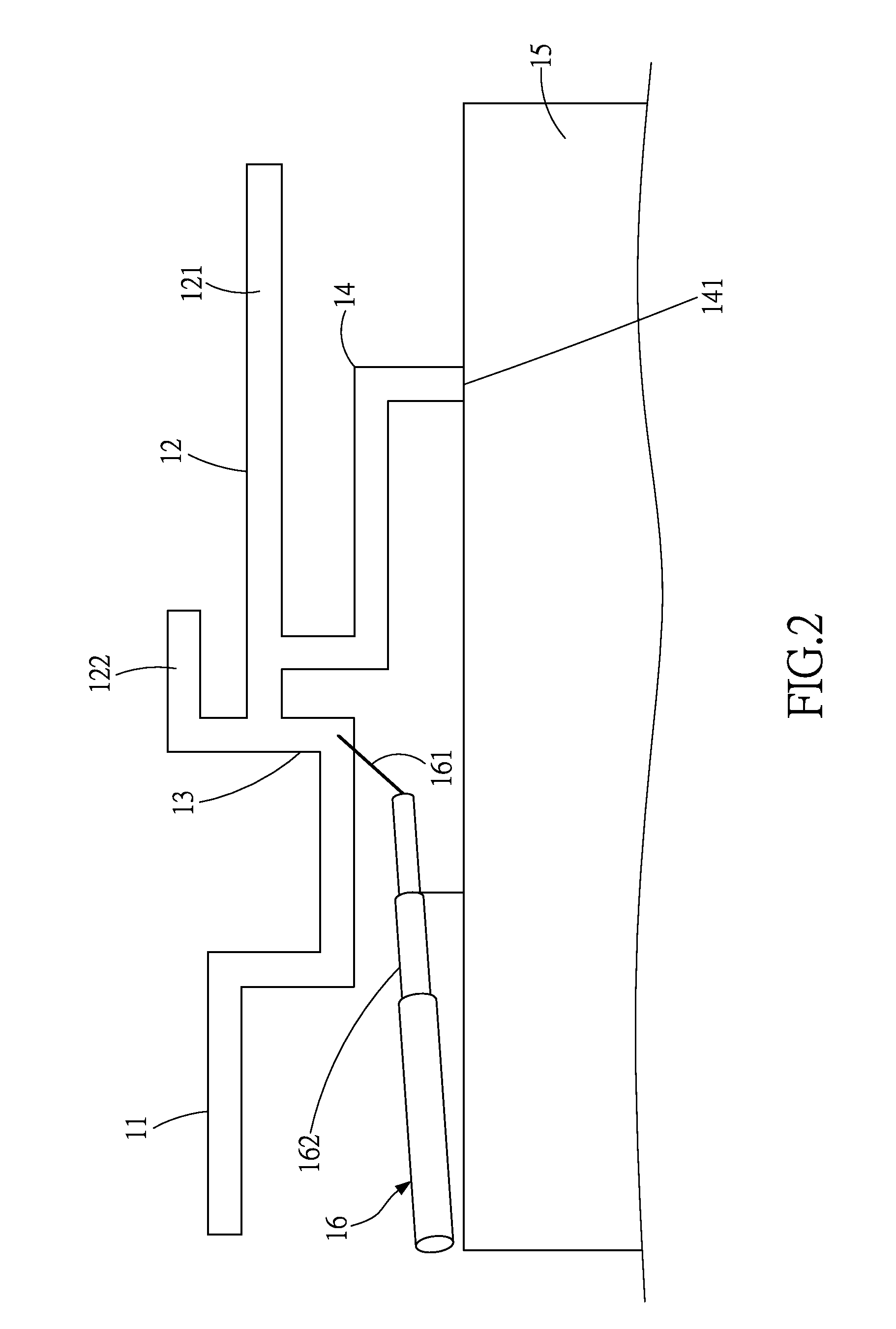Multi-frequency antenna
a multi-frequency antenna and antenna technology, applied in the field of antennas, can solve the problems of achieve the effects of preventing mutual interference of the antennae structure, superior impedance matching, and miniaturizing the antenna system
- Summary
- Abstract
- Description
- Claims
- Application Information
AI Technical Summary
Benefits of technology
Problems solved by technology
Method used
Image
Examples
first embodiment
[0016]Refer to FIG. 1, which is a top view of a multi-frequency antenna according to the present invention. The multi-frequency antenna of the present invention comprises a first antenna element 11, a second antenna element 121, a third antenna element 122, a connection element 13, and a shorted element 14. The multi-frequency antenna is disposed on a substrate, which is, for example, a printed circuit board. That is, the first antenna element 11, the second antenna element 121, the third antenna element 122, the connection element 13, and the shorted element 14 are disposed on the substrate.
[0017]The first antenna element 11 defines two ends and has a serpentine shape but the embodiments of the present invention are not limited thereto. One end of the first antenna element 11 is a free end. The other end of the first antenna element 11 is connected to one end of the connection element 13. In other words, the connection element 13 is extended from and perpendicular to the other end ...
second embodiment
[0027]Refer to FIG. 3, which is a diagram showing the measurement results of the voltage standing wave ratio (VSWR) of the multi-frequency antenna according to the present invention, wherein the horizontal axis represents frequency and the vertical axis represents dB. FIG. 3 shows that the operational frequency band S1 ranges from 2.0 to 7.0 GHz, which covers the frequency bands of the WLAN 802.11b / g system (ranging from 2.4 to 2.5 GHz), the WiMAX 2.3G system (ranging from 2.3 to 2.4 GHz), the WiMAX 2.5G (ranging from 2.5 to 2.7 GHz), the WiMAX 3.5G system (ranging from 3.3 to 3.8 GHz), and the WiMAX system (ranging from 4.9 to 2.825 GHz).
[0028]In the standards, an antenna is required to have VSWR lower than 3. Otherwise, the antenna would not have the required performance. FIG. 3 shows that VSWR is lower than 3 in all the frequency bands and lower than 2 in most of the frequency bands. Thus, the operating bandwidth is greatly increased. Therefore, FIG. 3 proves that the operating b...
PUM
 Login to View More
Login to View More Abstract
Description
Claims
Application Information
 Login to View More
Login to View More - R&D
- Intellectual Property
- Life Sciences
- Materials
- Tech Scout
- Unparalleled Data Quality
- Higher Quality Content
- 60% Fewer Hallucinations
Browse by: Latest US Patents, China's latest patents, Technical Efficacy Thesaurus, Application Domain, Technology Topic, Popular Technical Reports.
© 2025 PatSnap. All rights reserved.Legal|Privacy policy|Modern Slavery Act Transparency Statement|Sitemap|About US| Contact US: help@patsnap.com



